50 Years Ago: The Odyssey To Craft ‘2001’
26:47 minutes
On April 3, 1968, hundreds of audience members walked out of the theatrical premiere of a strange, long, dialogue-sparse science fiction film. Now regarded as one of the greatest science fiction films of all time, Stanley Kubrick’s 2001: A Space Odyssey was first met with harsh reviews from critics. And filming itself was a lengthy, expensive affair: Kubrick kicked off production without a plan for handling key scenes—including how the film would end.
Writer and filmmaker Michael Benson, author of the new book Space Odyssey: Stanley Kubrick, Arthur C. Clarke, and the Making of a Masterpiece, joins guest host John Dankosky to celebrate the film’s 50-year legacy, painstaking hand-crafted special effects, and behind-the-scenes glimpses of its making.
To celebrate the 50th anniversary, read an excerpt of Space Odyssey here, and explore behind-the-scenes photos from the classic film featured in the book.
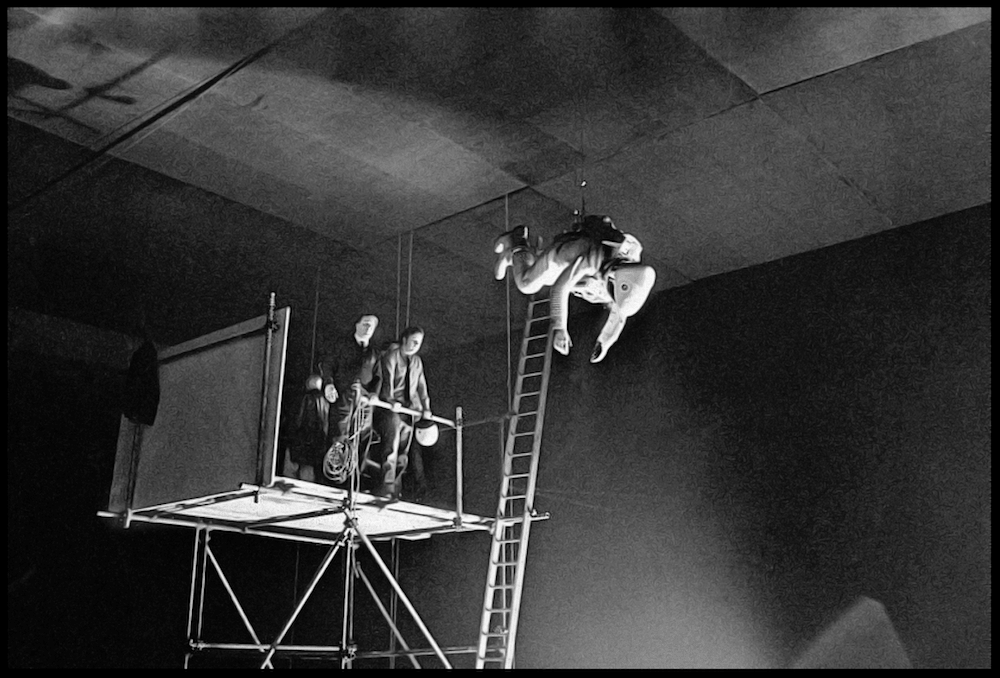
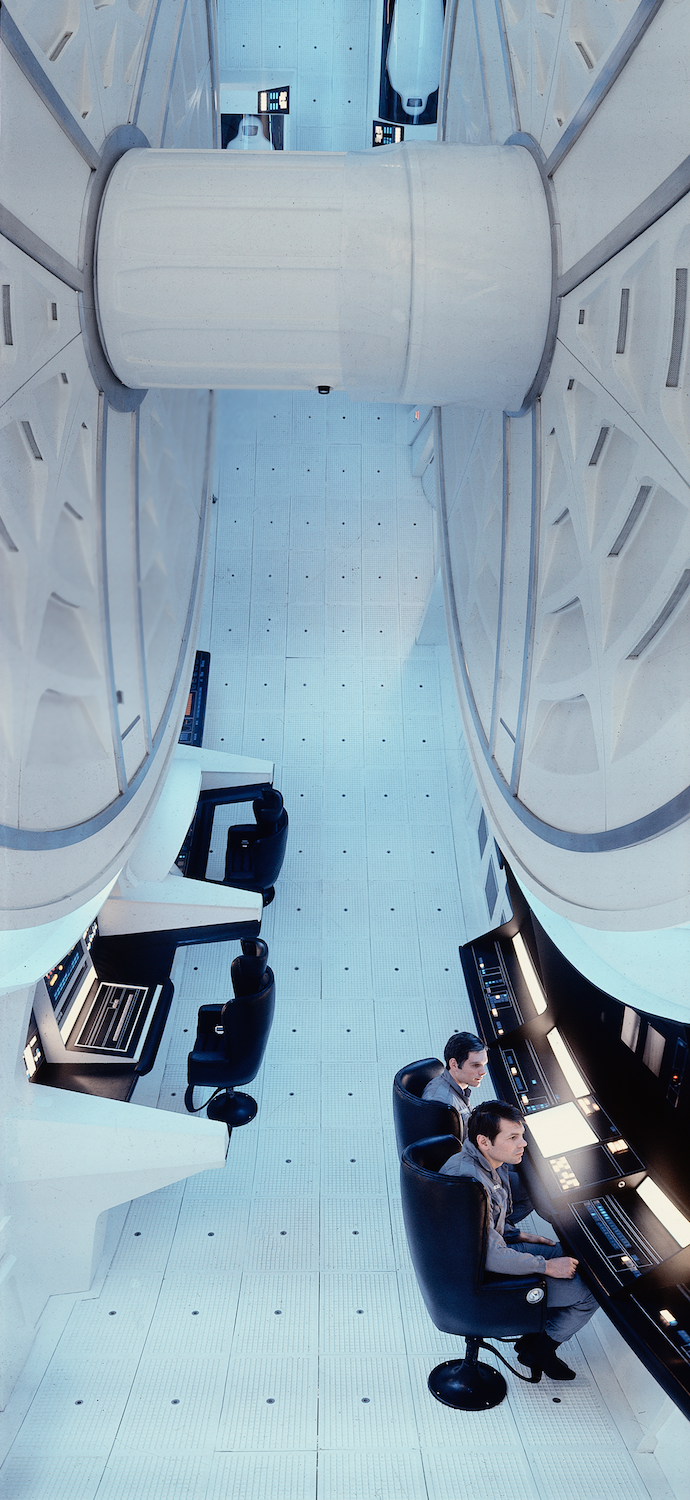
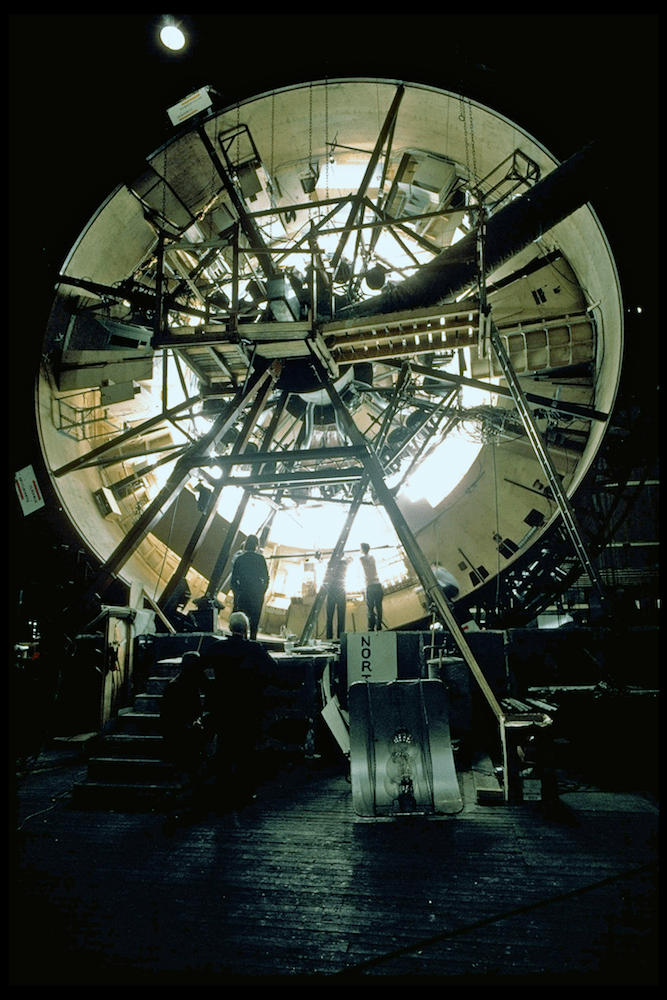
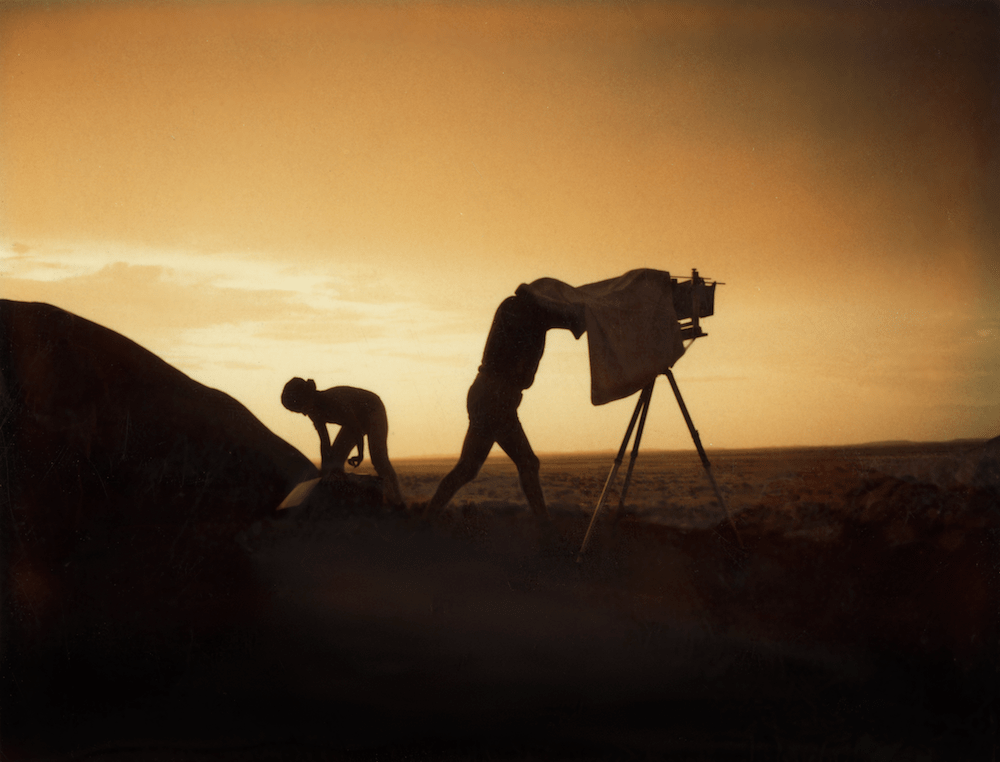
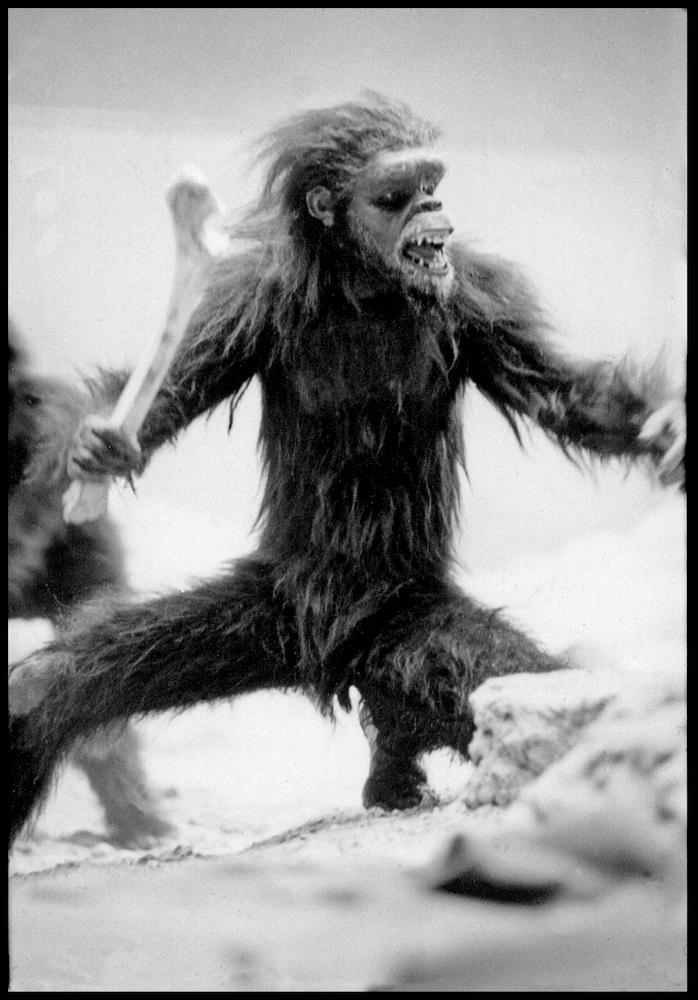
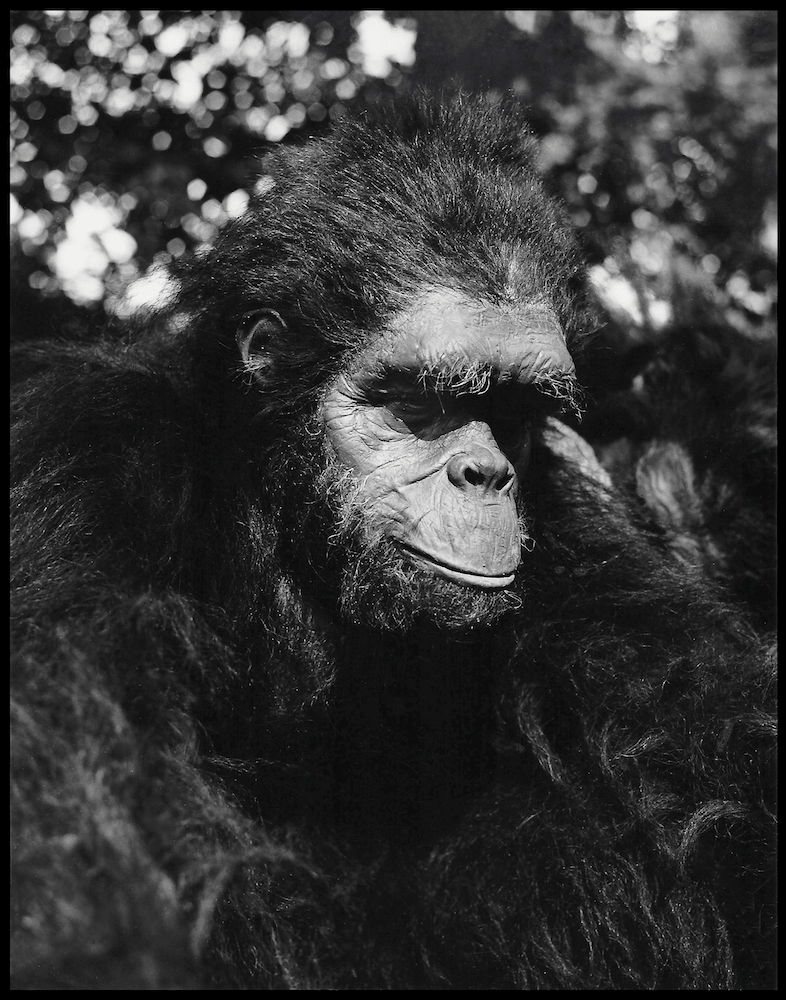
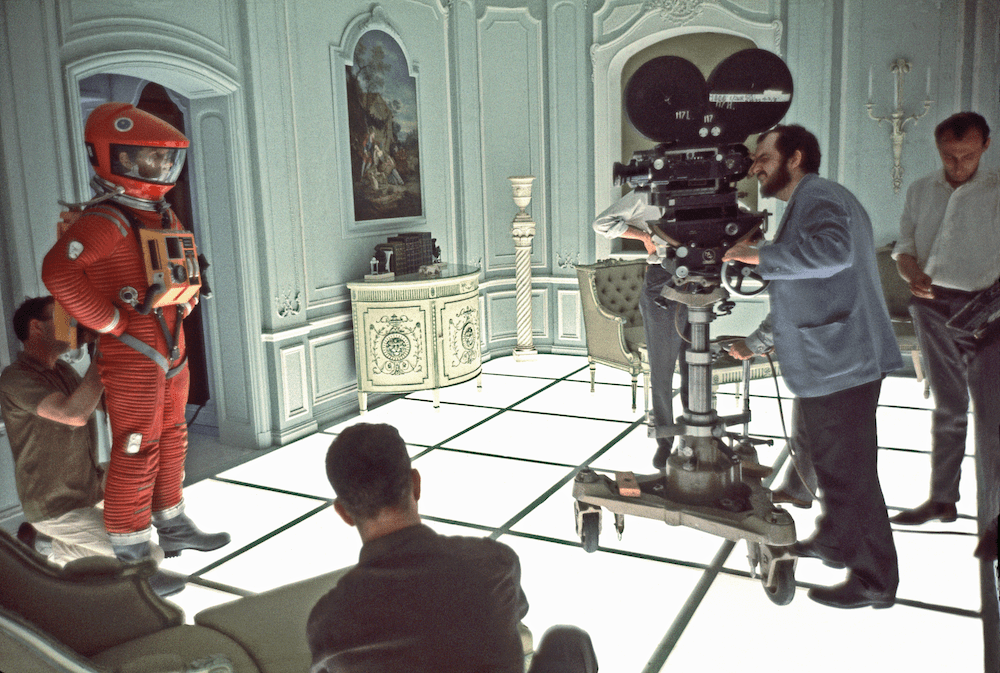
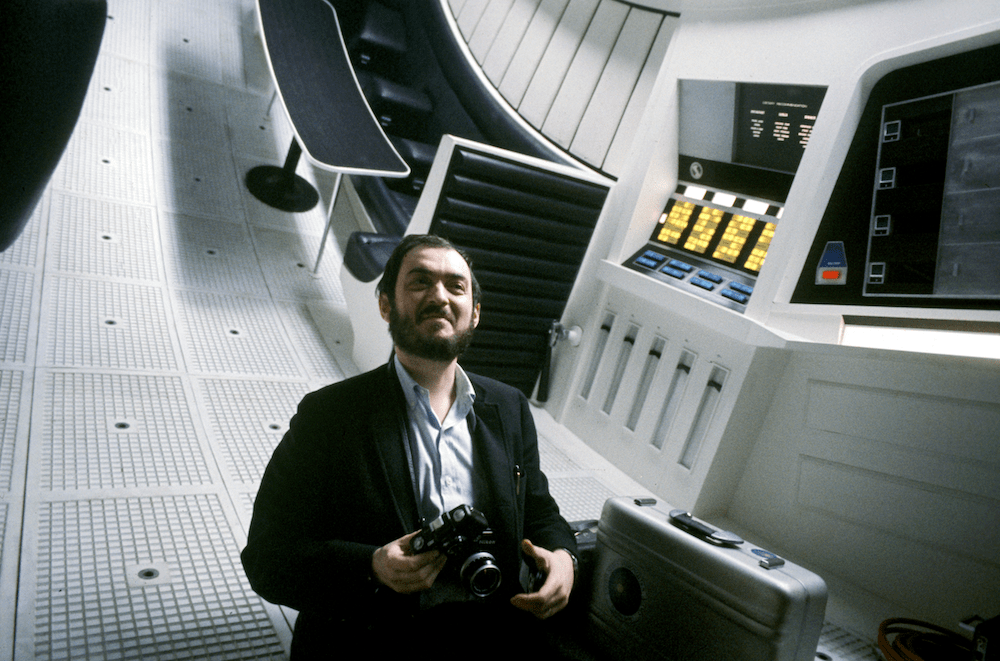
Michael Benson is an artist and filmmaker. He’s also the author of Cosmigraphics: Picturing Space Through Time (Harry N. Abrams, October, 2014)
JOHN DANKOSKY: In April of 1968, 50 years ago this week, theater goers were greeted with a science fiction epic like none they had seen. It’s the dawn of man, and a humanoid ape named Moon-Watcher throws a bone into the air. It’s then the not-too-distant future. It’s on the moon. And we’ve found the first eerie evidence of intelligent life outside of Earth. It’s 2001, and our most advanced artificial intelligence has gone on a killing spree, while an astronaut named Dave travels further than any human has ever gone through a mysterious wormhole.
Stanley Kubrick’s masterpiece 2001– A Space Odyssey, written in collaboration with the great author Arthur C. Clarke, was the product of four years of planning, and came a year and a half late from when it was supposed to and millions of dollars over budget. It hit theaters 50 years ago, and it still tops critics’ lists of the greatest American films. Here to celebrate and help pull back the curtain on how 2001 came to be is Michael Benson. He’s a filmmaker, an artist, and author of the new book Space Odyssey– Stanley Kubrick, Arthur C. Clarke, and the Making of a Masterpiece.
You can read an excerpt from his book and see some behind-the-scenes photos from the set of 2001 on our website, sciencefriday.com/2001. And of course, we do want to hear from you. You saw 2001 when it first appeared in theaters? Did you come to it later? Give us a call. Our number is 844-724-8255. That’s 844 Sci Talk. Or you can always tweet us @scifri.
Will, Michael, welcome to Science Friday. Thanks for being here.
MICHAEL BENSON: Hey. It’s great to be here. Thank you.
JOHN DANKOSKY: You know, I love this film. I’ve always loved this film. It’s one of my favorites. I saw it first as a kid on television. They used to cut them down. And it looked really, pretty terrible. Then I saw it as a teenager on the big screen. And it blew my mind. And now, as an adult, I just watched it the other night on HD at home. I find it hard to believe that people walked out of the premiere. What happened?
MICHAEL BENSON: Well, the original screenings were for invitation-only audiences of rather entitled and older representatives of the media elite and cultural elite. And they simply weren’t quite ready. There was a generational divide going on in the late ’60s– avant Garde culture, rock and roll, all manner of experimentation. And the initial audiences, as I said, were mostly older, entitled people. And they just didn’t get it. That’s one thing.
Another other is the initial cut was 20 minutes longer than the one we know. And that’s because the visual effects took so long to finish that Kubrick himself didn’t see his own film from beginning to end until he showed it to the top MGM brass. And then he had only two weeks between that screening and showing it.
JOHN DANKOSKY: It’s amazing. Well, what was science fiction on screen like at the time back in 1968, outside of this film? I mean, what could people have expected of a science fiction movie at the time?
MICHAEL BENSON: Well, the received wisdom about sci-fi pre- 2001 is that it was all kind of little green men stuff, and kind of kitschy. And that’s largely true. But you had masterpieces coming out of France, like Alphaville by Godard, which is the antithesis of 2001, in that it’s very low budget, but very innovative. And Chris Marker had La Jetée, which was only stills. And that was sci-fi. And that predates 2001.
So I wouldn’t say that there’s nothing good before 2001. But 2001 was a totally different creature. Because it was a big-budget Hollywood spectacular, and yet Kubrick turned that into this abstract, images-first, words very secondary art film with a big blockbuster budget.
JOHN DANKOSKY: And some of that budget went into the zero-gravity scenes. Some of the amazing work, especially at the beginning of the movie, but then of course it continues on through– how much of a departure was that, the visual effects that people were seeing in 1968?
MICHAEL BENSON: Totally, a total departure. But having said that, there were films that influenced Kubrick that were really obscure. So there was a Canadian film called Universe. It was a CBC production, black and white, if you can believe it. I mean, it’s about the universe, depicting nebulae and galaxies. But they shot it in black and white. I guess they were saving money.
[LAUGHING]
But the material there was very beautifully done. And the visual effects guy behind it, Wally Gentleman was hired by Kubrick. And he worked on 2001 at the beginning. And he used these tanks of liquids, filmed at high frame rates under bright lights, paint thinner and so on. And you drop ink or paint on top of the paint thinner, and you get galactic star clusters exploding and these kinds of things. We’re way before digital effects, of course. Kubrick was very influenced by that film.
And then there was a Russian film out of Petersburg– I mean, then called Leningrad– by Pavel Klushantsev. And it was called the Road to the Stars. And Klushantsev, on a very low budget, hung actors in space suits from cables, and filmed them from directly below, and produced very believable zero-gravity spacewalk sequences.
And Kubrick definitely saw that film. And he was absorbing everything. That guy was something else. He just absorbed everything. He saw everything. He read everything. He definitely saw that film. Because it was in Oscar contention as a short– the Russian submission, the Soviet submission, one year.
JOHN DANKOSKY: So he was taking in a lot of these films, experimental and otherwise. I’m John Dankosky. This is Science Friday from PRI, Public Radio International. And we’re talking with Michael Benson. He’s the author of a new book. It’s called Space Odyssey– Stanley Kubrick, Arthur C. Clarke, and the Making of a Masterpiece.
The big takeaway for me, of course, is that I guess I just assumed that this film was sprung fully out of the mind of Arthur C. Clarke, and realized by Stanley Kubrick in his way. And then as I read your book, I realize these guys were kind of making it up as they went. Can you just explain a little bit, for people who don’t understand, how this was coming together, this epic, really, on the fly?
MICHAEL BENSON: It was absolutely amazing. I mean, it’s not very normal, to say the least, to have a big-budget film and be improvising the way they were doing it. Kubrick seemed to have a lot of it in his head. There was never a final script. He kept on changing his mind about what he wanted to shoot. And you would think that, that would lead to utter chaos. But in Kubrick’s mind– he was really quite a character. And what ended up happening is the film got inexorably more refined. And he caught stuff that shouldn’t be there, and tossed it, and was rewriting throughout, rewriting the night before shooting something.
I’ve got a great quote in my book, where Tony Masters, the fantastic cinographer, art director and cinographer, for the film, who was responsible for a lot of these kinetic effects of this centrifuge turning, and camera effects, and so forth– I’ve got a great quote from him, where he said, “The art department was suicidal. Every night we would talk about what we were doing the next day. And every morning we’d come in and Stanley would say, no, we’re not going to do it that way, we’ll do it another way.”
[LAUGHING]
JOHN DANKOSKY: That’s got to be terrible to work with. I’m going to go to Jonathan, who’s calling from San Francisco. Jonathan, go ahead. You’re on Science Friday.
JONATHAN: Thank you so much for having me on. Thanks for writing this book and talking about 2001, one of my all time favorite movies. A lot of people are confused about the ending of 2001. I’ve always felt that it’s perfectly clear what happens to David Bowman in the end. Because Arthur C. Clarke explains it in his book. And if people want to know why the ending makes sense, and why Kubrick was so faithful to the book, they can just read– or why they were so faithful to the book in the movie– they can just read the book to really understand the ending. Thanks very much.
JOHN DANKOSKY: Thank you very much. So the book, I suppose, Michael, has all those loose ends tied up. But the book was being written at the same time.
MICHAEL BENSON: Well, yeah. In fact, it was all in parallel. And there were ideas going back and forth. And sometimes Clarke was upset, because Kubrick hadn’t made a decision. So he couldn’t write the next section. And sometimes vise versa, et cetera, et cetera.
But, John, I really appreciate that question. Because it allows me to quote a Clarke statement from, I guess it was early summer ’68, when he said– after his book came out, which was a little after the film came out, his book came out. And he said, “Well, for those who are still confused about 2001, I recommend read the book, see the movie again, and repeat as often as necessary.”
[CHUCKLING]
JOHN DANKOSKY: You know, it wasn’t just Arthur C. Clarke. It wasn’t just Stanley Kubrick. But you’ve got these great stories of people like Gary Lockwood, who plays Frank, one of the two astronauts, coming up, basically on his own, with one of the plot devices that really drives the center of the film. They couldn’t figure out how to make a plot device. And the actor just came up with it on the fly.
MICHAEL BENSON: Yeah. Well, so by the way, Kubrick– one thing I learned about Stanley Kubrick is he was a jazz drummer. And he played a lot. And he had a drum set. Christiane, his widow, told me that he had drums at their home, and he would play all the time. And a jazz drummer, or any kind of jazz player, knows how to listen to the other people in the band. He was like the leader of a band. And he knew how to listen to his talented collaborators. And I’ve got a great quote from Kubrick. He said, “Never let your ego get in the way of a good idea.”
JOHN DANKOSKY: And you know, he had so many of those good ideas. I want to hear more of them when we come back. We’re talking with Michael Benson. He’s the author of a brand new book. It’s called Space Odyssey– Stanley Kubrick, Arthur C. Clarke, and the Making of a Masterpiece. We’re celebrating the 50th anniversary of one of my favorite movies, maybe one of yours, as well. You can join us– 844-724-8255.
This is Science Friday. I’m John Dankosky. We’re celebrating the 50th anniversary of Stanley Kubrick’s 2001– A Space Odyssey. It appeared in theaters this week in 1968. Although, it was so strange and new in some ways that hundreds of audience members at the time walked out of the premier. A lot of people didn’t like it at first. Now, of course, it’s a masterpiece.
I’m talking with the author of a brand new book about Stanley Kubrick and Arthur C. Clarke, and the making of this masterpiece. His name is Michael Benson. He’s the author of Space Odyssey. If you’ve got questions for us, or some of your favorite scenes from the movie, we’ll get to sum of those– 844-724-8255. That’s 844 Sci Talk. Or you can tweet us @scifri.
You were talking about how Kubrick would listen to his collaborators. And he’d listen to people who are just hanging around the set, including some of the actors. At the same time, he put some of these people in some really precarious positions. I mean, you tell stories about people almost dying on the set, including one stuntman who almost asphyxiates himself.
MICHAEL BENSON: Yes. Well, so that’s Bill Weston. And I was very fortunate to have an interview that a collaborator of mine named Dave Larson conducted with Mr. Weston a year or so before he passed. And this is a stuntman who worked with all the major directors. He was in everything. You name it, and he was in it. He was in a lot of Bond films, et cetera, et cetera.
And at the end, he said that the film he was most proud of being in was 2001, despite the ordeal that Stanley put him through. Because he just respected the integrity, the artistic integrity, of the director. And the story in question is, he was dangling from a wire in a space suit that was hermetically sealed. And they had a little oxygen bottle– not a big one, a little one– in the backpack feeding into his helmet. But the carbon dioxide, there no place for the carbon dioxide he was exhaling to go.
And so he gradually became more and more poisoned by carbon dioxide. And he asked Stanley at one point, Stanley, I’ve got to punch some holes– can we punch some holes in the back of the helmet so I can get a little air in there, please? And Stanley said, no, no, no. I’m afraid light might leak in. We can’t do that. So he had to live with that.
And then there was another incident, where he floated out of the space pod in his suit on a wire, which was hidden because the camera was directly below. And he wanted to have two wires, because he was a little bit nervous about it. He’s 30 feet above a hard concrete floor, no net. And Stanley said, no, one wire. I’m afraid there will be a shadow of the second wire. And so Weston had to live with that.
First time he tried it, that single wire, which was made of multiple strands, started pinging. It started separating. And in fact, the strand that whipped forward, because of high tension being released, cut a handle off of his front jetpack thing, which fell and hit a camera assistant on the side of head. And he had to be hospitalized, taken off to the hospital.
So Weston, you know– I mean, stuntmen do that. They’re called stuntmen for a reason. They brave a lot of danger and hazards and so on. But there’s a great story in my book, where after Stanley says, no, you can’t punch those holes, he arranged a signaling system. There was no intercom. And he arranged a signaling system. That means Weston, in his spacesuit, arranged a body signaling system, that if he extended his arms in a kind of crucifix position, it meant, I need to be taken in soon. And if he did it twice, it meant, really, now.
And he was hanging up there in one of the first shots. And he was counting backwards as he got more and more hazy and groggy because of the carbon dioxide. And then finally he did it twice. And he distinctly remembers hearing Stanley say– well, somebody coming up to Stanley saying, we’ve got to bring Weston in, and Stanley saying, no, no, no. I didn’t get the shot yet.
And then he passed out. And they brought him in, of course. And then when he came to– and this is a guy who had served as a mercenary in South Africa. This is not somebody you want to mess with. He was furious. And he went off to find Stanley. And Stanley had fled the studio, and didn’t come back for a few days.
JOHN DANKOSKY: Uncompromising as a director in so many of those ways, but then in other ways, kind of compromising. The monolith, this beautiful black monolith that is so iconic now, wasn’t supposed to be black. It’s part of, really, a compromise that he had to make.
MICHAEL BENSON: Yeah. Although, that’s an interesting point you make. But I have an early comment from Kubrick to Clarke from ’64, early ’65, where they had this idea of having featureless black pyramids riding in open limousines down Fifth Avenue in a ticker tape parade. And it was kind of a joke. But the featureless black thing was obviously, it was kind of in their lexicon.
And when they had a problem with the clear Plexiglas monolith, which didn’t look right to Kubrick, Tony Masters, who was really innov– he was also like a jazz musician. He could improvise quickly. And he said, Stanley, let’s just make it black, then nobody will know what it is. And Kubrick said, yeah, let’s do that.
JOHN DANKOSKY: They made it black. But of course, he was fastidious. He didn’t want any fingerprints on it. Because you wouldn’t get fingerprints on something from space. I want to go to a phone call here. Phil is calling from Davis, California. And he’s got a good question about another important scene we haven’t talked about yet. Hi, Phil. Go ahead.
PHIL: Hi. I’m a retired biology professor. And I used to use a clip from– the iconic clip of the bone being thrown the air and turning it into a spaceship. And to me, that summed up the whole of human evolution into the tool user. And I would show it to my students and ask them what it meant to them. And it was very interesting.
JOHN DANKOSKY: Thank you for sharing that story. And I’m sure that the students got something out of it. I remember when I first made that connection, as a student. Tell us more about how that developed, the dawn of man.
MICHAEL BENSON: Well, by the way, that particular match cut– it’s not a jump cut. It’s a match cut. Because the bone matches, in some ways, the angle of the spacecraft that it cuts to. I asked Dan Richter, who played the lead man-ape, the one who has this epiphany when he’s holding a bone and realizes, this could be used in ways that I hadn’t anticipated, and learns how to use it as a weapon– ends up throwing it into the air– I asked him how he thought Stanley got to that moment.
And he said he wasn’t absolutely sure about it, but he had he believed he knew. His personal– and Dan was there the whole time, of course. He told me a story about how, when they were initially shooting Dan getting excited as he realizes the bone can be used as a weapon, Dan knocked a rib bone from the skeleton he was smashing, and it flew up into the air. And he said to, Stanley, oh, I’m sorry. Like he thought it was a mistake. And Kubrick said, no, no, that’s good. Go with it.
And by the way, Dan could communicate with Stanley through the mask of the man-ape suit without any motion being visible on the mask, which is interesting. Because they were shooting without live sound. So Dan and Stanley could communicate with each other during the ape-man scenes, while Dan was acting, which is also something I learned that was interesting. Anyway, the point of my story is Dan thought that, that spinning of the bone up into the air, which he did– he thought was a mistake, and Stanley said, no, go with it, it looks good– that might have been the origins of this idea of how to cut between four million years in the past and 2001.
JOHN DANKOSKY: You write that Kubrick and Clarke, quote, “took the complex, sometimes haunting, sometimes magnificent truths revealed by modern science, polished them, and used them as a window to view the human condition within a staggeringly vast universe.” Viewing the human condition– how do you see it viewing the human condition? Because it is a movie with so few humans in it. And there’s so little human emotion, which is fascinating.
MICHAEL BENSON: Well, by the way, I would say that Moon-Watcher exhibits emotion. But that’s a protohuman. And it really is about our position, not just in space, but in time, as in our position on the timeline of evolution. I believe that when it comes to the people being relatively emotionless, or quite emotionless– and I wrote the other day in The New York Times that they were sort of component parts of their machinery. They had become component parts of their machinery. And within the first week of the film coming out, people were already saying that the HAL 9000 computer was the most human character in the film.
Well, I think that was– obviously, Kubrick didn’t do anything that wasn’t intentional– very rarely, anyway, at least in his professional work. And that was very intentional. So Kubrick was telling us something about our relationship to technology. And I believe he was– I mean, this film is very relevant today because of what’s going on with AI, for example.
JOHN DANKOSKY: Well, let’s actually play a very famous clip about AI. This is where HAL has betrayed his human comrades. And it’s an example of our anxieties about artificial intelligence. Here’s that famous scene where Dave comes face-to-face with this new side of HAL.
[AUDIO PLAYBACK]
– Hello, HAL. Do you read me? Do you read me, HAL?
– Affirmative, Dave. I read you.
– Open the pod bay doors, HAL.
– I’m sorry, Dave. I’m afraid I can’t do that.
– What’s the problem?
– I think you know what the problem is just as well as I do.
– What are you talking about, HAL?
– This mission is too important for me to allow you to jeopardize it.
[END PLAYBACK]
JOHN DANKOSKY: Just like the science fiction of the day was very different from 2001, the character of HAL the robot is very different from the way robotics or artificial intelligence was portrayed, if at all.
MICHAEL BENSON: Well, one thing that I found fascinating about 2001 was the extent to which it was an R&D project. I mean, those guys– I mean, Kubrick and Clarke, each of them were just absolutely serious about constantly educating themselves, researching everything. They had, for example, Marvin Minsky, the co-founder of the MIT Artificial Intelligence Lab and an early pioneer in artificial intelligence, as an advisor.
And so their presentation of HAL was exceedingly well-informed. They always went to the top people. And you choose your field– design, computers, what have you. They went to the top people. And they took very seriously what they were told. So it wasn’t, let’s make something that looks good and plausible, and get the film out. It was really, let’s create something that, it’s rock solid– a rock solid projection that is utterly plausible and will stand the test of time. And I think they brought it off.
JOHN DANKOSKY: Is there any truth to this story that HAL, H-A-L, is actually just a shift of the letters IBM?
MICHAEL BENSON: Well, now, that story was– both Kubrick and Clarke said that is absolutely not the case. But my theory about that, if you’re interested in hearing it, is that there was a kind of–
JOHN DANKOSKY: Briefly.
MICHAEL BENSON: There was a kind of subliminal slipping of the letters by one letter. But having said that, Marvin Minsky suggested the acronym. So he said it should be Heuristic Algorithmic, H, and then they– I don’t know if Minsky himself said that’s H-A-L, and let’s just call him HAL, or if they heard Heuristic Algorithmic and said, OK, it’s HAL. I just don’t know. But the chances of it being a coincidence are pretty high– or pretty low. And so, I think it might have been subliminal.
JOHN DANKOSKY: It might have been subliminal. I’m John Dankosky. This is Science Friday from PRI, Public Radio International. And we’re talking about Space Odyssey– Stanley Kubrick, Arthur C. Clarke, and the Making of a Masterpiece. Michael Benson is the author, and he joins us here.
Well, we heard one very famous HAL scene. I want to hear the other one. And this is where Dave knows that the only way he will survive this is if he disconnects HAL. It’s incredibly chilling. Let’s listen.
[AUDIO PLAYBACK]
– Will you stop, Dave.
[AIR COMPRESSING]
[HEAVY BREATHING]
Stop, Dave. I’m afraid. I’m afraid, Dave. Dave. My mind is going. I can feel it.
[END PLAYBACK]
JOHN DANKOSKY: I have to say, Michael, that is one of the saddest, and for my entire life of watching this movie, most emotional moments. And here, it’s a homicidal computer that destroyed all the humans on-board. But you feel so much for him.
MICHAEL BENSON: Oh Yeah. And by the way, I first saw the film when I was six. My mom took me in ’68. I was six. And that scene absolutely transfixed me. I mean, it was absolutely the combination of horror and awe. But I agree.
That scene also– I actually had the privilege of asking Arthur C. Clarke if he wrote it. And he said, of course I wrote it. Who do you think wrote it? And I said, well, Arthur, the reason I asked you that is it seems so much more Kubrickian than Clarkeian, this kind of chilly intensity. And so I subsequently– and I didn’t push the point. Because he wasn’t going to explain it to a whippersnapper like me, 30 years later. That’s when I met him. I actually first met him in the year 2001.
But I subsequently learned that it was really, like a lot of good collaborations– it was a collaboration. Like a lot of good collaborations, one party wrote the music, the other wrote the lyrics, in a way. So Christiane Kubrick told me that it was Arthur’s idea that an intelligence, an artificial intelligence, can feel, and can feel pain, and can feel emotions; fear and so forth. And then it was her husband, Stanley, who wrote the actual words.
JOHN DANKOSKY: What is the movie about, in the end, in your mind, after all this time spent with it? What is the movie about, really?
MICHAEL BENSON: I think the movie is about the evolutionary story of the human race from prehuman primate to contemporary Homo sapiens– with all of our weird problems, and our aggressions, and our Cold War, our face-offs, et cetera, et cetera, et cetera– and then our rebirth into a successor species. That’s one way to look at it. It’s also about our position, not just in time, but in space, in this staggeringly vast expanse. Because it really conveys something about the scale of the universe.
JOHN DANKOSKY: The book is Space Odyssey– Stanley Kubrick, Arthur C. Clarke, and the Making of a Masterpiece. And the author is Michael Benson. Thank you so much for sharing all of this research with us. Because it is truly one of the most fascinating films ever made. And I feel like I learned so much more than I knew before. So thank you for that.
MICHAEL BENSON: Well, thanks so much for having me on. It was really fun to talk about it.
JOHN DANKOSKY: One last thing before we go. Please join Ira on April 9th at the Greene Space here in New York City to talk about one of his favorite subjects, the orchid. There will be special guests, too; Marc Hachadourian of the New York Botanical Garden and Susan Orlean, author of The Orchid Thief. There will be drinks and food. You might even get to take home an orchid from Ira’s personal collection. You can get your tickets today at sciencefriday.com/events. That’s sciencefriday.com/events.
Charles Bergquist is our director. Our senior producer is Christopher Intagliata. And our producers are Alexa Lim, Christie Taylor, and Katie Hiler. We had technical and engineering help today from Rich Kim, Sarah Fishman, and Jack Horowitz.
We’re active all week on Facebook, Twitter, Instagram, all social media. If you’ve got a smart speaker, you can ask it to play Science Friday whenever you want. Everyday is now Science Friday. You can email us. The address is scifri@sciencefriday.com. Ira is back next week. In New York, I’m John Dankosky.
Christie Taylor was a producer for Science Friday. Her days involved diligent research, too many phone calls for an introvert, and asking scientists if they have any audio of that narwhal heartbeat.